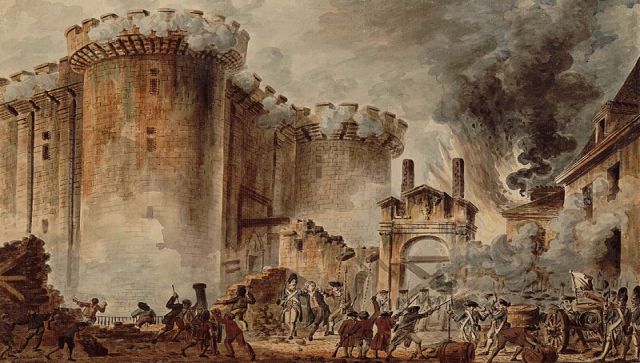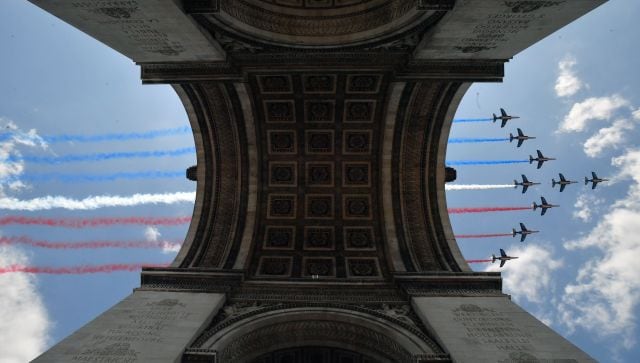Modi in France: What is the Bastille Day parade that PM will attend as guest of honour?
Modi in France: What is the Bastille Day parade that PM will attend as guest of honour?

The India-France strategic partnership has completed 25 years. It’s a big diplomatic milestone and to mark it Prime Minister Narendra Modi will be in France. He will be in Paris on 13 July and 14 July at the invitation of French president Emmanuel Macron. There will be bilaterals, the focus will be on defence and space. And one of the highlights of the visit will be the Bastille Day celebrations to which the Indian premier has been invited as a guest of honour.
It’s a rare honour. On Bastille Day or French national day, the country holds the Bastille Day parade, said to be the oldest and largest in Europe. It’s a lot like India’s Republic Day; there is a display of France’s military strength. But unlike India, foreign leaders are seldom invited to the celebrations. This makes the presence of PM Modi all the more significant. The last time a foreign leader was invited to Bastille Day was in 2017 – it was then US president Donald Trump.
We take a history of Bastille Day, the parade and what makes this year’s celebration so different.
Also read: What to expect from PM Narendra Modi’s France visit
What is Bastille Day?
The national day of France is celebrated on 14 July every year. While it is known as Bastille Day in English-speaking nations, in France it is formally called Fête nationale française (French National Celebration).
One of the most important days in French history, it marks the fall of the Bastille, a military fortress and political prison, considered a symbol of monarchy and armoury in the 18th Century. The attack signalled the beginning of the French Revolution.
Why is 14 July celebrated as Bastille Day?
In 1789, France was experiencing shortages of food and its people were forced to pay high taxes, which was seen as a solution to King Louis XVI’s debts. The king who sensed the anguish called upon the Estates-General to deliver a new tax plan. The result was the Third Estate, which broke away from the clergy and the nobility, and demanded a written constitution for France.
In late June, their proclamation led to the forming of the National Assembly. But weeks later, the king called in fresh troops and ousted Jacques Necker, who was approved by the Estate, as finance minister. This led to fears that the monarchy was attempting to crush any political rebellion in the making, according to a report in TIME.
It all culminated on 14 July 1789. Parisians marched to the Hôtel des Invalides to loot firearms and cannons and then headed to the ancient royal fortress of Bastille in search of proper ammunition. That hunt for gunpowder – not the hope of freeing prisoners – was the main reason for the storming of the Bastille, reports TIME.

After the attack, people seized weapons and ammunition to fight the royal troops. They released a handful of prisoners. It led to a battle and the beheading of the prisoner governor and his officers.
The storming of the Bastille signalled the first victory of the people of Paris against a symbol of the “Ancien Régime” (Old Regime). Months later, the edifice was razed to the group.
A year on, on 14 July 1790, the Fête de la Fédération (Feast of the Federations) was celebrated with great pomp to mark the first anniversary of the insurrection. Tens of thousands of Parisians gathered to celebrate the new French Nation’s unity and its people’s national reconciliation.
An altar was set up at Champ-de-Mars, which was quite far outside the centre of Paris then, as a symbol of civility.
How did the parade start?
However, the commemoration of 14 July did not continue. It was not until almost a century later, it was declared a national holiday.
Nine decades on, a deputy for the Seine department, Benjamin Raspail, moved that 14 July be named the national holiday of the Republic, and Parliament passed an act to that effect on 6 July 1880.
The first Bastille Day military parade was held in Paris on 14 July 1880 in Champs-Elysées, which is often described as the “world’s most beautiful avenue”.
After World War I (1914-1918), 14 July 1919 was a solemn occasion. While France was on the winning side, it came at an enormous cost. On Bastille Day, the entire French army and allied troops, including 1,000 war wounded, marched behind marshals from Avenue de la Grande Armée to Place de la République, via the Champs-Élysées.

Similarly, during World War II, 14 July 1945 was preceded by three days of civic rejoicing.
In the years that followed, July 14 festivities became popular. The traditional military parade is well-planned and there is a display of fireworks across the country. It is attended by the French president and other top leaders of the country.
Also read: Why France has banned fireworks for Bastille Day
What can we expect from this year’s parade?
As is the tradition, France will display its military prowess and rich heritage at the Bastille Day parade. It will witness the presence of 6,300 soldiers from various contingents. One of the highlights of the parade will be the tri-services contingent representing the Indian Army, Navy and Air Force.
This is the second time India will be participating in the parade. In 2009, when then PM Manmohan Singh was the guest of honour, the parade opened with 400 Indian commissioned and non-commissioned officers and soldiers.
This year, the 269-member contingent of the Indian armed forces will mark alongside their French counterparts. As it rehearsed for the parade, the tune of “Sare Jahan Se Achha” filled the air at Champs-Elysees.
The Indian Army contingent of 77 marching personnel and 38 members of the band will be led by Captain Aman Jagtap. It is represented by the Punjab regiment, one of the oldest regiments of the Army. The regiment’s history dates back to both World Wars, where they demonstrated exceptional valour and were honoured with 18 Battle and Theatre Honors in the first war. Joining them is the Rajputana Rifles Regiment Band, the seniormost refile regiment of the army, according to a report by ThePrint.
IAF contingent practices marching drills in #Paris ahead of Bastille Day 2023 #BastilleDay2023 #BastilleDay #France pic.twitter.com/UQMUDwSN38
— Firstpost (@firstpost) July 11, 2023
Commander Vrat Baghel and Squadron Leader Sindhu Reddy will lead the navy and air force contingents. The Rafale fighters jets of the IAF will also participate in the flypast during the parade.
It is rare to include a foreign contingent in the military parade. And this is yet another indication of the long-standing partnership between India and France.
With inputs from agencies
What's Your Reaction?



























































